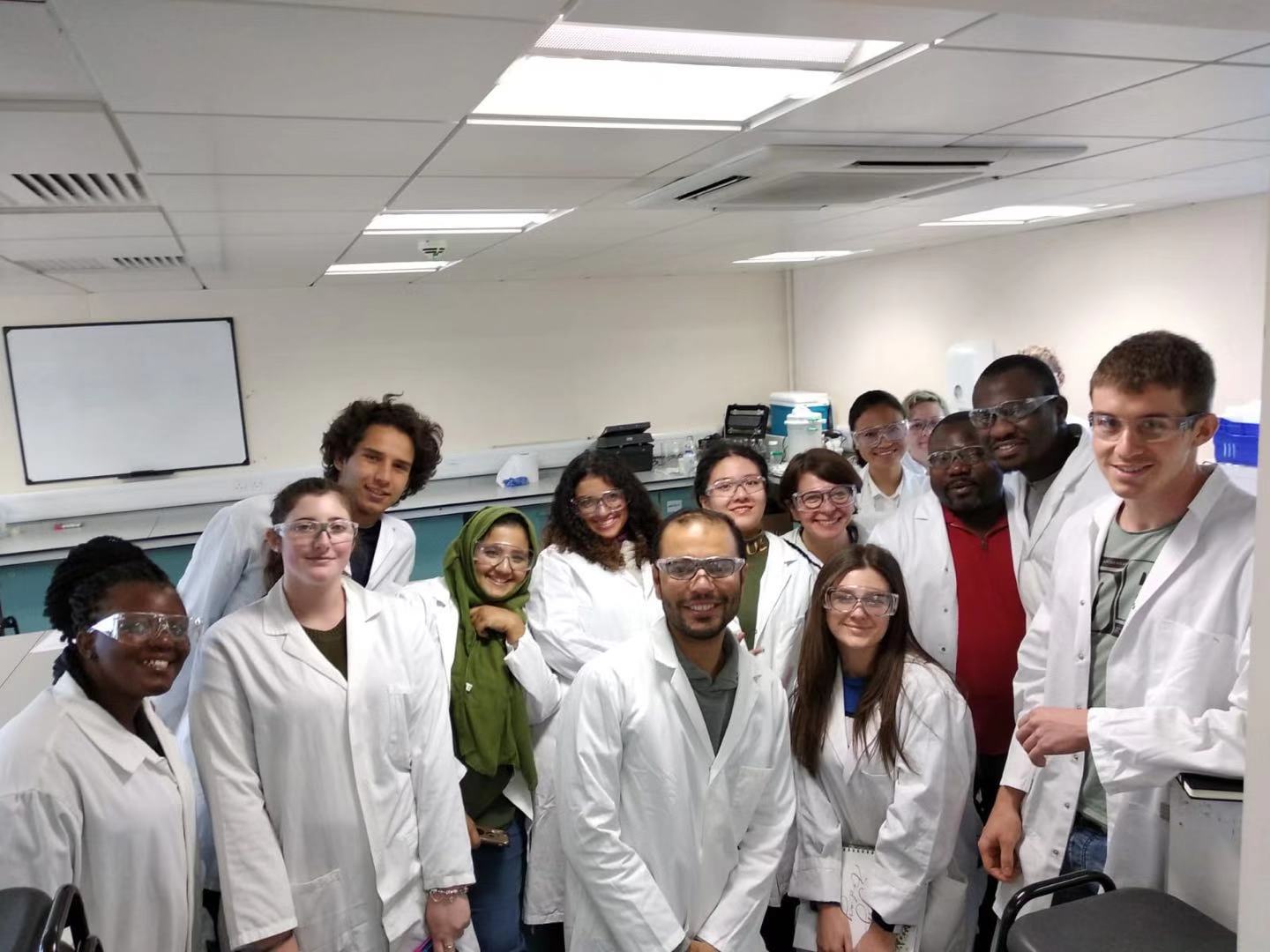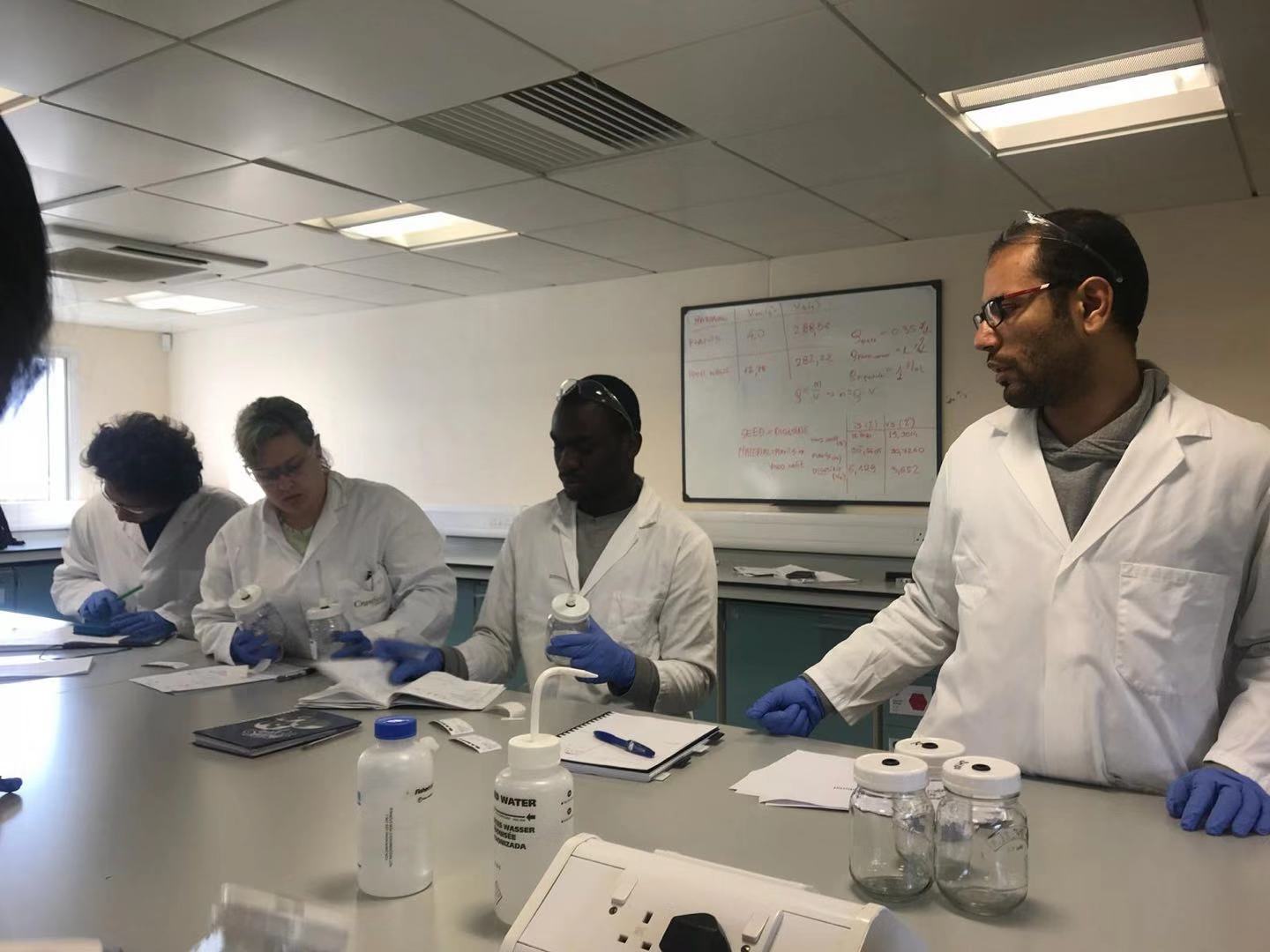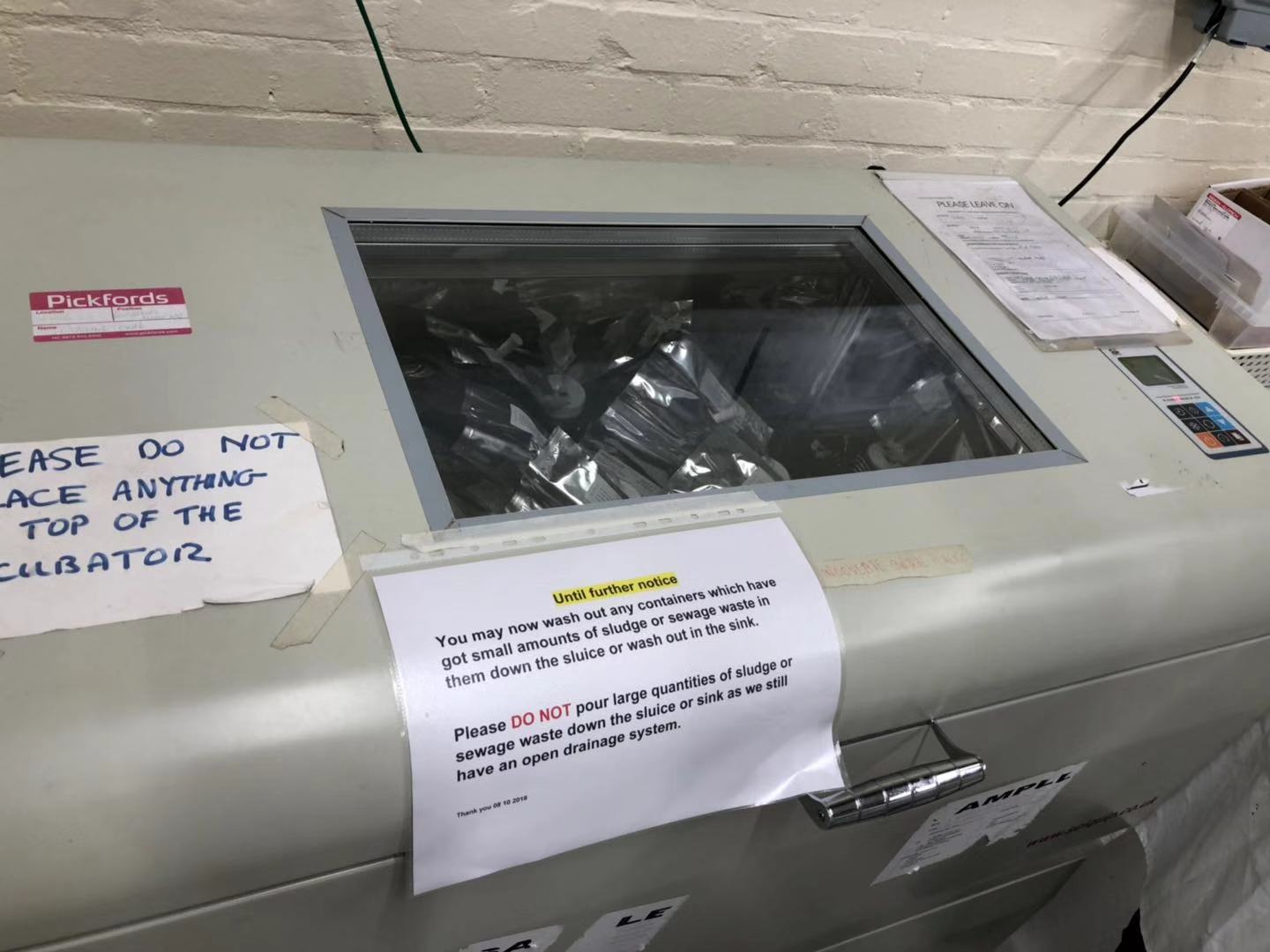The first week of circular waste management
29/11/2018

From 22 Oct, we started a new module, circular waste management: recycle, recover, and disposal, which is the second module in the Environmental Engineering MSc. This is a module which took four weeks. In the first part, in order to understand biorefinery better, the experiment to measure biogas from collected material impressed me a lot.
During my undergraduate course of environmental engineering in China, I experienced a lot in a lab, such as some experiments related to chemical analysis. However, I have never worn big goggles that can cover my glasses. This made me feel like a scientist!
The first part of the experiment is testing the total solids (TS) and volatile solids (VS) of the waste. We worked as two groups to weigh two different types of waste. The group I was in was in charge of plants. The material is a mixture of grass, leaves, and some other residues from plants. So it’s not like powder or liquid, it takes more room for the same weight. We weighed it carefully in order to get the most precise number.
Then we did a calculating exercise to find out the TS and VS of different materials and how much of the materials we needed for the next step. From this stage, we created a new group to calculate the ability to produce biogas by different materials. Using wet weight and dry weight, we got the TS and VS. Considering the ratio of seed and material, we knew we needed 17.80g material and because we are supposed to compare the difference between food waste with fat and without fat, the sample included food waste 15.80g and peanut butter 2.00g.

Calculating is not easy. Discussing with partners can improve accuracy.
The weighing process impressed me a lot. It was difficult to control the amount of material you added to the scale and this is the time to work as a team. Your team mates felt in the same way as you. When adding the material into the bottle, we all felt nervous together but we kept encouraging each other, saying “come on” or “wait, wait”. The atmosphere was really happy.
After weighing and preparing the bottles ready for the test, we went to the lab to see the facility collecting and testing the biogas.
There is something to remember in a lab. Firstly, safety is always most important. Wear lab coats, goggles, and gloves all the time and wash your hands before leaving. Secondly, keep the lab tidy. Many people work in the same lab, and you don’t know when and who will come and use the machine you have used. They don’t what you have done in the lab and if there is something toxic, so you need to clean up properly after yourself; so cleaning is not just for tidiness, but also for others safety.

Glass collected into bags in machine
Categories & Tags:
Leave a comment on this post:
You might also like…
Keren Tuv: My Cranfield experience studying Renewable Energy
Hello, my name is Keren, I am from London, UK, and I am studying Renewable Energy MSc. My journey to discovering Cranfield University began when I first decided to return to academia to pursue ...
3D Metal Manufacturing in space: A look into the future
David Rico Sierra, Research Fellow in Additive Manufacturing, was recently involved in an exciting project to manufacture parts using 3D printers in space. Here he reflects on his time working with Airbus in Toulouse… ...
A Legacy of Courage: From India to Britain, Three Generations Find Their Home
My story begins with my grandfather, who plucked up the courage to travel aboard at the age of 22 and start a new life in the UK. I don’t think he would have thought that ...
Cranfield to JLR: mastering mechatronics for a dream career
My name is Jerin Tom, and in 2023 I graduated from Cranfield with an MSc in Automotive Mechatronics. Originally from India, I've always been fascinated by the world of automobiles. Why Cranfield and the ...
Bringing the vision of advanced air mobility closer to reality
Experts at Cranfield University led by Professor Antonios Tsourdos, Head of the Autonomous and Cyber-Physical Systems Centre, are part of the Air Mobility Ecosystem Consortium (AMEC), which aims to demonstrate the commercial and operational ...
Using grey literature in your research: A short guide
As you research and write your thesis, you might come across, or be looking for, ‘grey literature’. This is quite simply material that is either unpublished, or published but not in a commercial form. Types ...






